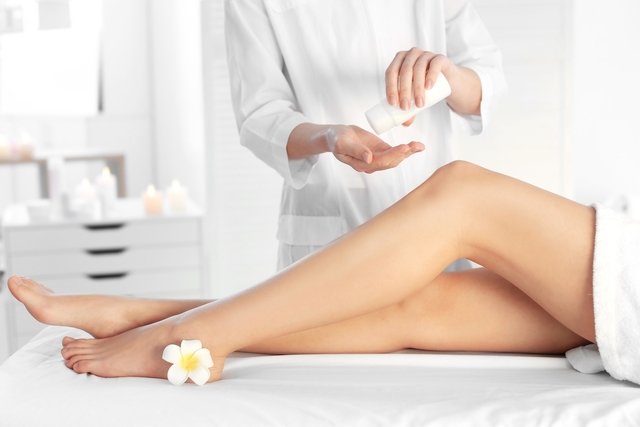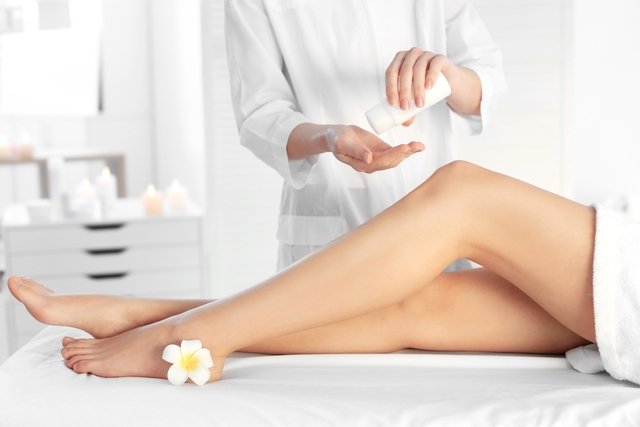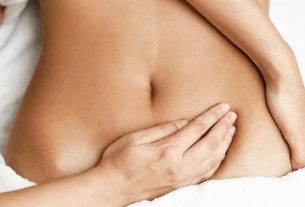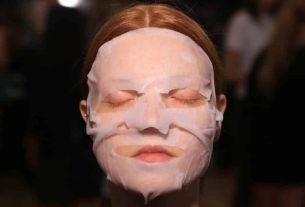Moon bathing, also known as golden bathing, is an aesthetic procedure often performed in the summer with the aim of lightening hair, making it less visible to the naked eye.
Furthermore, this procedure is capable of hydrating and nourishing the skin, as well as removing dead skin cells, improving the appearance of the skin, leaving it softer and enhancing tanned summer skin.
Moon bathing can be done both at home and in a beauty salon or beauty center, as it is a simple and quick procedure. However, it is recommended that the moon bath be done by people qualified and qualified to carry out the procedure, as it is important that the mixture is suitable for the person’s skin type, avoiding allergic reactions.

What is it for
Moon bathing is recommended for:
- Lighten hair;
- Remove dead skin cells;
- Promote deep hydration and nutrition of the skin.
Furthermore, the moon bath helps to leave the skin soft and smooth, due to the cleansing, nutrition and hydration carried out during the procedure.
Moon bathing is a simple procedure that lasts between 30 minutes and 1 hour and can be applied to any part of the body, with the exception of the face, with the arms, legs, back and belly being the places where this aesthetic procedure is performed with more frequently. The effect of moonbathing lasts on average 1 month, which is the average time for hair to grow and become visible.
How to make
Moon bathing can be done at home, however, it is recommended that it be carried out in a beauty salon or beauty center by a trained professional, as in addition to reducing the chances of a reaction, it is possible to reach areas that cannot be reached alone. .
The step by step stops. taking a moon bath is:
1. Skin preparation
Before applying the bleaching product, it is important to apply a paraffin cream or an oil-based product to the skin to avoid irritation or burning of the skin, with Shea butter or vegetable oil being a good option, for example.
2. Discoloration
At this stage, the hair is bleached, most often using a mixture containing hydrogen peroxide (20 volumes of hydrogen peroxide) and a bleaching powder, in quantities suitable for the person’s skin type.
The product is applied and spread on the area to be lightened, remaining for approximately 5 to 20 minutes depending on the person’s desire.
3. Removing the bleaching product
The removal of the bleaching product is done to remove excess bleach after the bleaching stage, using a spatula.
4. Exfoliation
After discoloring the hair and removing excess product, an exfoliation is performed with the aim of removing dead cells present in the skin.
5. Nutrition and hydration
After exfoliation, all the product is removed and then a moisturizing cream is applied to recover the skin from the procedure and leave it more nourished, soft and hydrated.
Care for taking a moon bath
It is important that before taking a moon bath, the product is tested on a small area of the skin, especially if the person has never undergone this aesthetic procedure.
This is because it allows you to check whether the person has any allergy to the substance used or unexpected reaction, and it is recommended to wash the area with plenty of water to remove the product.
Possible risks
Due to the fact that moon bathing is done mainly with hydrogen peroxide, which is a toxic substance, it can cause damage to the skin and side effects such as irritation or burns, for example, especially if used in concentrations higher than those recommended for the skin type.
Furthermore, there is also a risk of allergic reactions, which can be noticed through local burning or itching, and it is recommended to immediately remove the product if this is noticed.
Who shouldn’t do
As moon bathing involves the use of a potentially toxic substance, this aesthetic procedure is not recommended for pregnant women, children, people who have skin lesions or who are allergic to any of the product’s components.
Bibliography
- JEONG, Mi-Sook et al. Significant damage of the skin and hair following hair bleaching. Journal of Dermatology. Vol 37. 882-887, 2010
- POISON CONTROL. Hydrogen Peroxide – How to Prevent and Treat Unintentional Poisonings. Available at: <https://www.poison.org/articles/2012-jun/hydrogen-peroxide>. Accessed on November 22, 2019

Sign up for our newsletter and stay up to date with exclusive news
that can transform your routine!
Warning: Undefined array key "title" in /home/storelat/public_html/wp-content/plugins/link-whisper-premium/templates/frontend/related-posts.php on line 12
Warning: Undefined array key "title_tag" in /home/storelat/public_html/wp-content/plugins/link-whisper-premium/templates/frontend/related-posts.php on line 13





